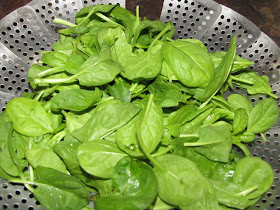 Although Bee Colony Collapse Disorder remains a 'mystery' in North America, last year France, Germany and Italy all suspended the use of a certain class of pesticides, Systemic Nicotine-based Neonicotinoids, as a precautionary measure. The results - restored bee populations - have prompted these governments to uphold the ban in 2010. In North America, however, for the fourth year in a row more than one third of bee colonies failed to survive the winter. A study recently published in the US scientific journal PLOS (Public Library of Science) found 121 different types of pesticides in 887 wax, pollen, bee and hive samples collected from throughout the United States last year.
Although Bee Colony Collapse Disorder remains a 'mystery' in North America, last year France, Germany and Italy all suspended the use of a certain class of pesticides, Systemic Nicotine-based Neonicotinoids, as a precautionary measure. The results - restored bee populations - have prompted these governments to uphold the ban in 2010. In North America, however, for the fourth year in a row more than one third of bee colonies failed to survive the winter. A study recently published in the US scientific journal PLOS (Public Library of Science) found 121 different types of pesticides in 887 wax, pollen, bee and hive samples collected from throughout the United States last year.
Nicotinyl pesticides are systemic pesticides containing clothianidin, thiametoxam and imidacloprid, all neurotoxins that interfere with normal brain function in insects. Crop seed such as corn, soybeans and canola is coated with the pesticide, which is then absorbed by the plant's sap as it grows, so that it becomes a permanent insecticide within the plant. Scientists have observed that directly after sucking dew from corn leaves that had absorbed neonicotinoid pesticides, disoriented bees were unable to find their way back to their hives. Massive numbers of bees are getting lost and dying due to these pesticides! Corn, soybeans and citrus fruits are the main agricultural industries that rely on systemic pesticides, so by purchasing organic fruit and vegetables, you can help reduce the demand.
Systemic pesticides like 'Merit', which contains imidacloprid, are still available to retail consumers to kill White Grubs in lawns, so please encourage your lawn-loving neighbours to use eco-friendly nematodes to combat them instead. Ottawa-area bees are particularly stressed because of the large amount of corn grown here -- most corn is seed-treated with systemic pesticides -- and lots of it winds up in pollen that the bees take home to be stored and to feed the next generation of baby bees. You can create a safe haven for bees on your balcony by growing pesticide-free, nectar-producing plants and by creating an environment bees will feel at home at.
- Bees prefer to feed in sunny areas that are out of the wind
- Bees need a source of water -- use a shallow container of water with a few rocks placed in it for drinking platforms, so they don't drown
- Don't use any chemical pesticides or insecticides on your balcony, and be careful when using organic pesticides such as pyrethrum and rotenone, as bees are sensitive to them
- Bees feed on a range of plants throughout their life cycle -- have several plant species flowering at once, and aim for a sequence of plants flowering through spring, summer, and fall
- Flower colors that are particularly attractive to bees are blue, purple, violet, white, and yellow
- Many garden plants and herbs —particularly older, heirloom varieties—are good sources of nectar or pollen for bees
Annuals & Veggies that attract Bees:
Basil (Ocimum basilicum), Borage (Borago officinalis) Cantaloupe, Cornflowers (Centaurea spp.), Cosmos, Cucumbers, Dahlias, Love-In-A-Mist (Nigella damascena), Melons, Peppers (Caspicum spp.), Poppies (Papaver rhoeas & somniferum), Pot Marigolds (Calendula officinalis), Sunflowers (Helianthus spp), Verbena and Zinnias.
Perennials & Herbs that attract Bees:
Anise Hyssop (Agastache foeniculum), Bee Balm (Monarda didyma), Catnip (Nepeta spp.), Chives (Allium schoenoprasum), Coriander/Cilantro, Garlic Chives (Allium tuberosum), Lavenders (Lavandula spp.), Mints (Mentha spp.), Nasturtiums, Rosemary (Rosmarinus officinalis), Sage (Salvia officinalis), Strawberries, Tansy (Tanacetum vulgare) and Thyme (Thymus spp.)

















.JPG)


